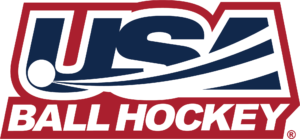Resources
Have a Rule or Scenario Question?
Ask our experts! Click below to submit your question to our Ref Tech Team!
SCENARIO:
Rule 40 (A) A player on the offensive team hand passes the ball I to the offensive zone. Another player on the same team chases the ball but refuses to touch it because it is a hand pass and the play will be blown dead.
A defensive player also stands near the ball but refuses to play the ball because as soon as they do, the offensive player on the fore check will be free to play the ball as the hand pass will be washed out.
The referee eventually blows the whistle as play as essentially stopped.
Where is the face off? In the offensive zone or outside the zone?
According the USA Ice Hockey rules and NHL rules, the onus is always on the defensive team to advance the puck. Utilizing that same reasoning, I have always dropped the ball in the offensive zone because the team on defense refused to play the ball. Also, I prefer to stay consistent with other hockey rules.
However, there seems to be a belief that because the initial hand pass was caused by the offensive team, the ball should be placed outside the zone.
The USABH rule book does not have the same rule that the defensive team must advance the ball, at least not as written. Furthermore, the rule on face offs simply says if it’s the fault of the defensive team it stays in the zone but if the fault of the offensive team it comes out. This seems to have left a grey area in this instance.
Furthermore, because there is no onus on the defensive team advancing the ball, I can foresee multiple scenarios of teams just holding the ball behind their net. –Submitted by Jake P. – Pittsburgh, PA
USABH REF TECH TEAM RESPONSE:
In relation to the specific example provided, the face off shall be conducted at the nearest face off location in the end zone when the defensive team refrains from playing the ball.
While it’s unfortunate the non offending team (defensive team in the example provided) would be under a considerable amount of pressure by the attacking player, the non offending teams players are the only individuals that can legally play the ball without causing an infraction against the rules. They must endeavor to keep the ball in motion. The offending team (attacking team in the example provided) cannot legally play the ball and are not required to do so since it would result in an infraction if a teammate gained possession of the ball following the action of the hand pass.
QUESTION:
Rule 38 (D) What is considered the privilege area for goalkeeper?-Submitted by Scott F.- Pittsburgh, PA
USABH REF TECH TEAM RESPONSE:
There is no official “privileged” area for goaltenders outside of the goal crease – should the goalie be deemed to be making an effort to “delay the game” by smothering the ball w/o being pursued by an attacker then a penalty shall be assessed. It is encouraged (if it is safe to do so) to tell the goalie to play the ball. Communication can be a useful tool here. This is a call made at the discretion of the referees.
QUESTION:
Rule 44 ( D) Can a player’s feet be above and or behind blue line or does one foot still need to touch?-Submitted by Scott F.- Pittsburgh, PA
USABH REF TECH TEAM RESPONSE:
The player’s foot has to physically touch the off-sides line before the ball crosses the line. Any body part hovering over the off-side line, without touching the line is considered offside. The off-side line is not a plane (such as in the NFL when a touchdown can be scored.)
QUESTION:
USABH REF TECH TEAM RESPONSE:
